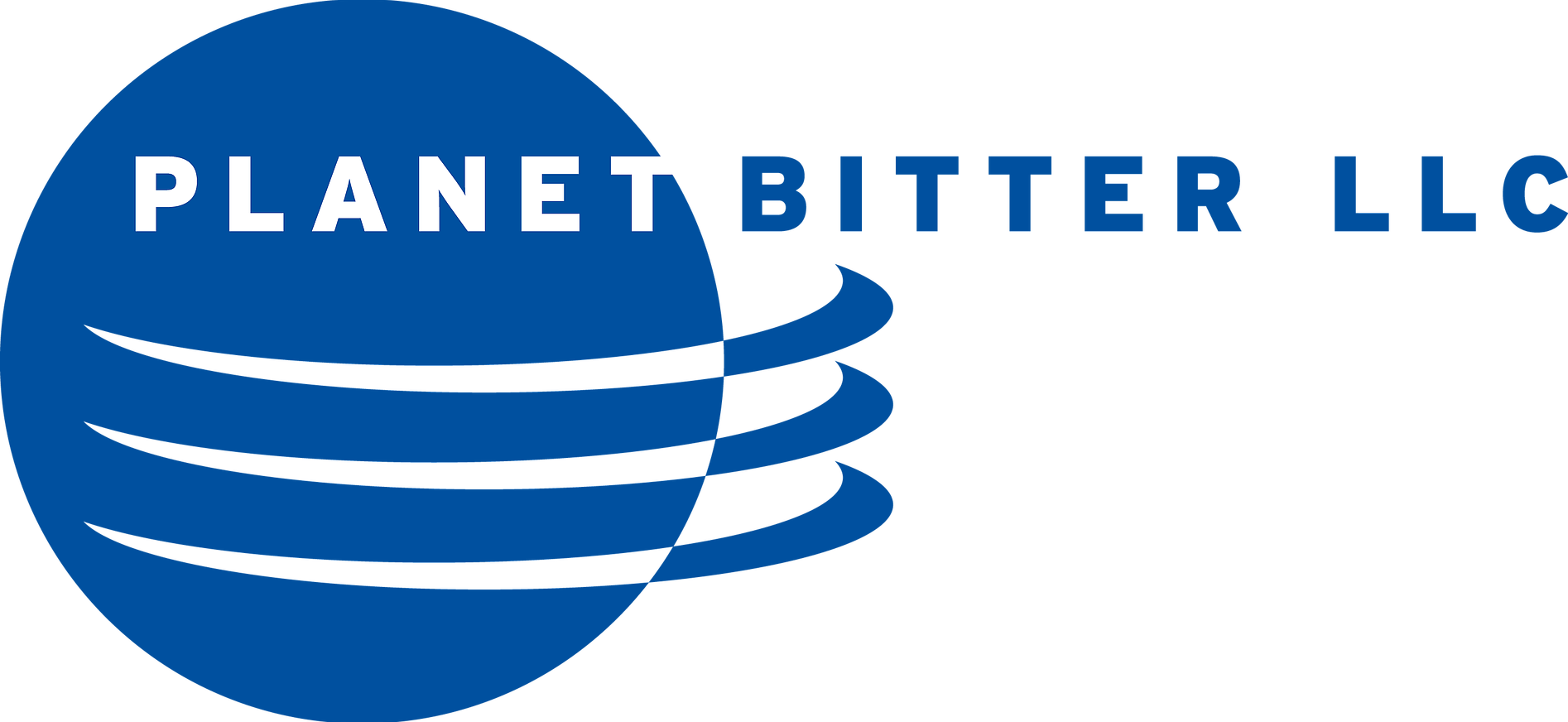

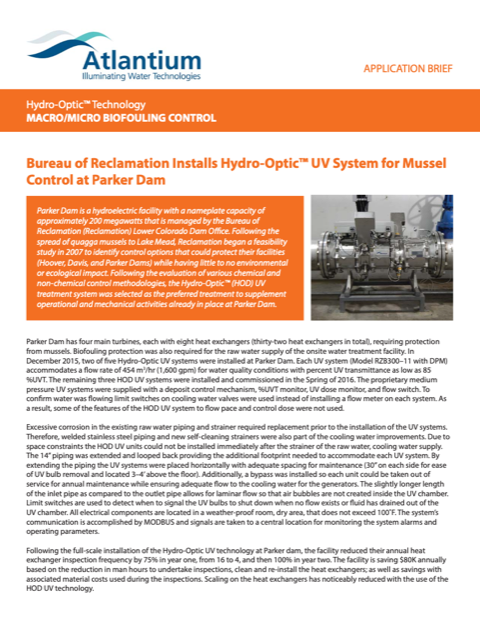
Parker Dam is a hydroelectric facility with a nameplate capacity of approximately 200 megawatts that is managed by the Bureau of Reclamation (Reclamation) Lower Colorado Dam Office. Following the spread of quagga mussels to Lake Mead, Reclamation began a feasibility study in 2007 to identify control options that could protect their facilities (Hoover, Davis, and Parker Dams) while having little to no environmental or ecological impact. Following the evaluation of various chemical and non-chemical control methodologies, the Hydro-OpticTM (HOD) UV treatment system was selected as the preferred treatment to supplement operational and mechanical activities already in place at Parker Dam...Read More
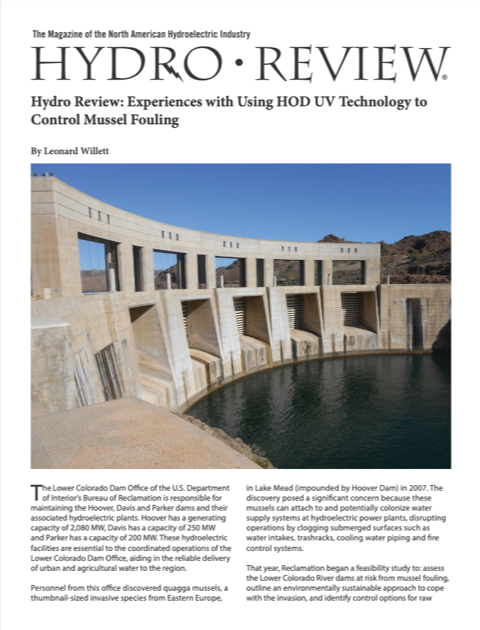
The Lower Colorado Dam Office of the U.S. Department of Interior’s Bureau of Reclamation is responsible for maintaining the Hoover, Davis, and Parker dams and their associated hydroelectric plants. Hoover has a generating capacity of 2,080 MW, Davis has a capacity of 250 MW and Parker 200MW. These hydroelectric facilities are essential to the coordinated operations of the Lower Colorado Dam Office, aiding in the reliable delivery of urban and agricultural water to the region...Read More
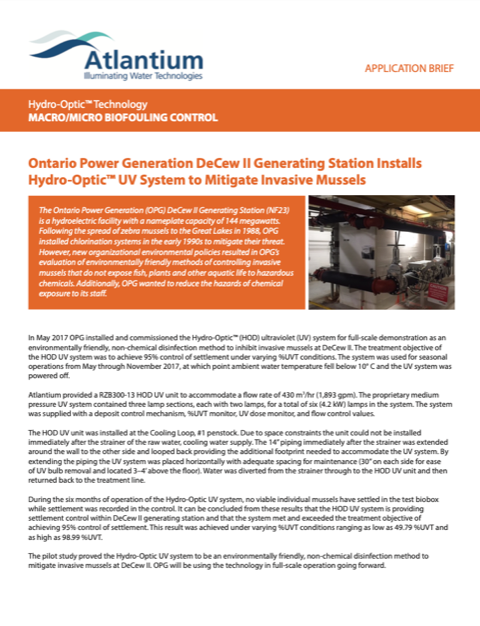
The Ontario Power Generation (OPG) DeCew II Generating Station (NF23) is a hydroelectric facility with a nameplate capacity of 144 megawatts. Following the spread of zebra mussels to the Great Lakes in 1988, OPG installed chlorination systems in the early 1990s to mitigate their threat. However, new organizational environmental policies resulted in OPG’s evaluation of environmentally friendly methods of controlling invasive mussels that do not expose fish, plants and other aquatic life to hazardous chemicals. Additionally, OPG wanted to reduce the hazards of chemical exposure to its staff...Read More
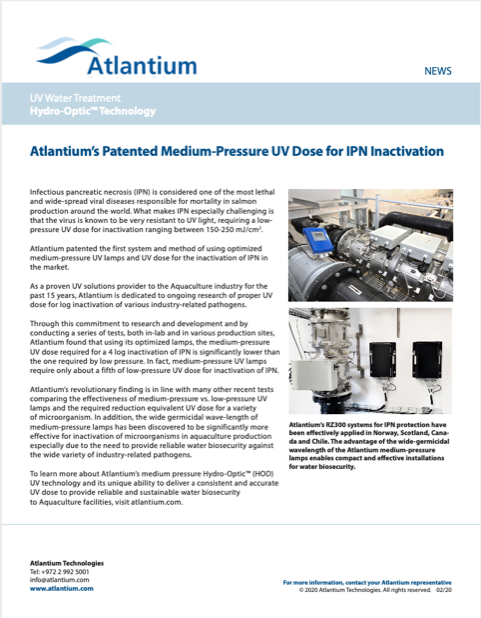
Infectious pancreatic necrosis (IPN) is considered one of the most lethal and wide-spread viral diseases responsible for mortality in salmon production around the world. What makes IPN especially challenging is that the virus is known to be very resistant to UV light, requiring a low- pressure UV dose for inactivation ranging between 150-250 mJ/cm2...Read More
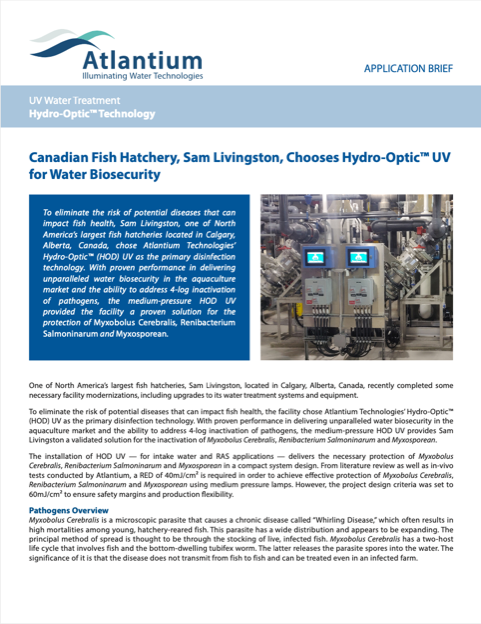
To eliminate the risk of potential diseases that can impact fish health, Sam Livingston, one of North America’s largest fish hatcheries located in Calgary, Alberta, Canada, chose Atlantium Technologies’ Hydro-OpticTM (HOD) UV as the primary disinfection technology. With proven performance in delivering unparalleled water biosecurity in the aquaculture market and the ability to address 4-log inactivation of pathogens, the medium-pressure HOD UV provided the facility a proven solution for the protection of Myxobolus Cerebralis, Renibacterium Salmoninarum and Myxosporean...Read More
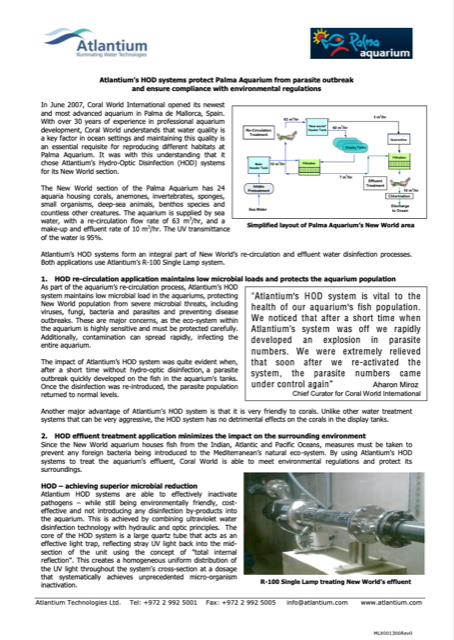
In June 2007, Coral World International opened its newest and most advanced aquarium in Palma de Mallorca, Spain. With over 30 years of experience in professional aquarium development, Coral World understands that water quality is a key factor in ocean settings and maintaining this quality is an essential requisite for reproducing different habitats at Palma Aquarium. It was with this understanding that it chose Atlantium’s Hydro-Optic Disinfection (HOD) systems for its New World section...Read More
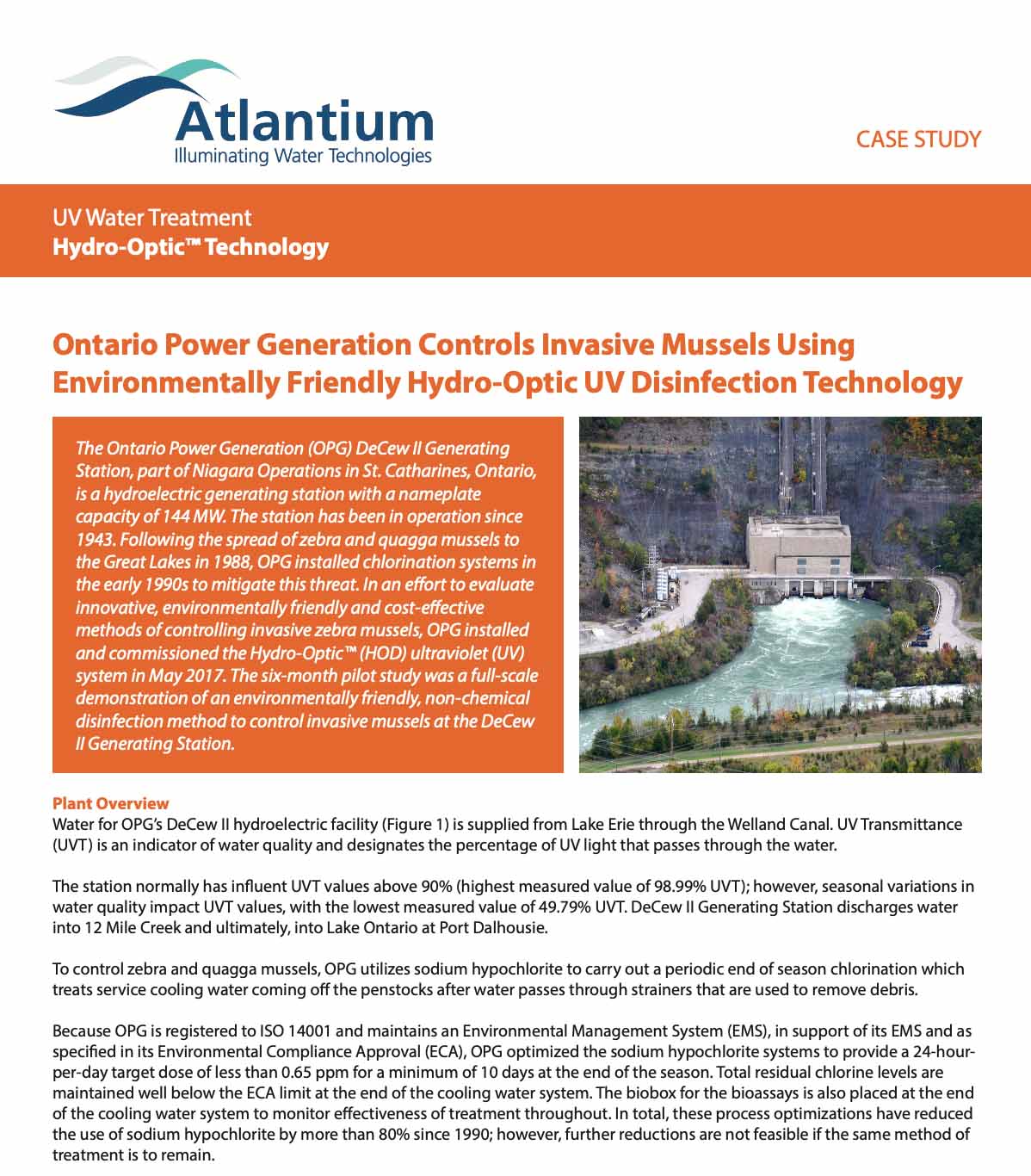
The Ontario Power Generation (OPG) DeCew II Generating Station, part of Niagara Operations in St. Catharines, Ontario, is a hydroelectric generating station with a nameplate capacity of 144 MW. The station has been in operation since 1943. Following the spread of zebra and quagga mussels to the Great Lakes in 1988, OPG installed chlorination systems in the early 1990s to mitigate this threat. In an effort to evaluate innovative, environmentally friendly and cost-effective methods of controlling invasive zebra mussels, OPG installed and commissioned the Hydro-OpticTM (HOD) ultraviolet (UV) system in May 2017. The six-month pilot study was a full-scale demonstration of an environmentally friendly, non-chemical disinfection method to control invasive mussels at the DeCew II Generating Station. ...Read More
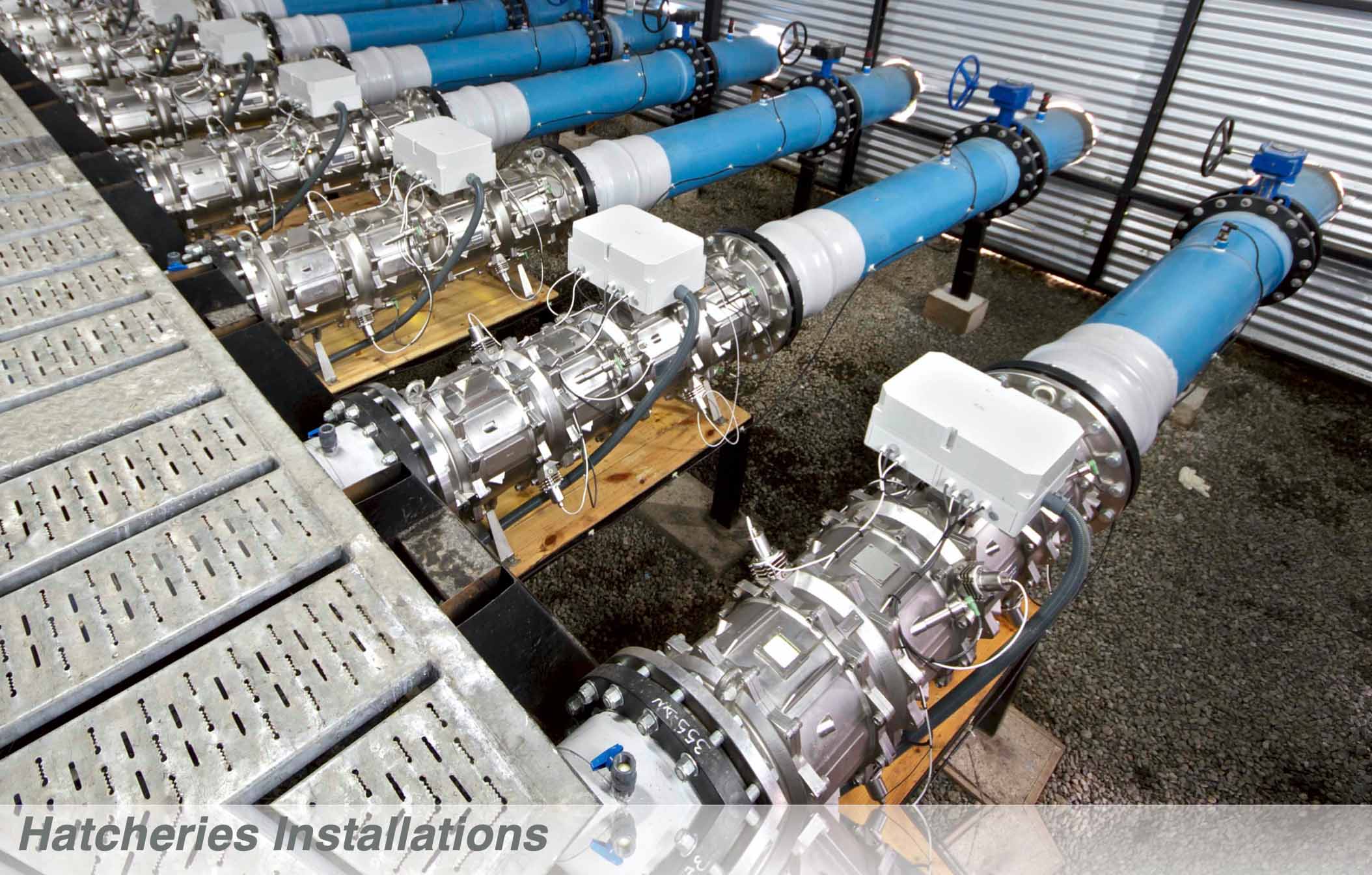
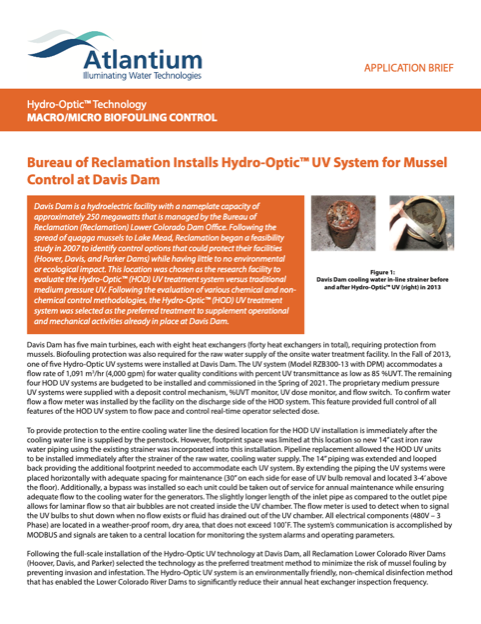
Davis Dam is a hydroelectric facility with a nameplate capacity of approximately 250 megawatts that is managed by the Bureau of Reclamation (Reclamation) Lower Colorado Dam Office. Following the spread of quagga mussels to Lake Mead, Reclamation began a feasibility study in 2007 to identify control options that could protect their facilities (Hoover, Davis, and Parker Dams) while having little to no environmental or ecological impact. This location was chosen as the research facility to evaluate the Hydro-OpticTM (HOD) UV treatment system versus traditional medium pressure UV. Following the evaluation of various chemical and non- chemical control methodologies, the Hydro-OpticTM (HOD) UV treatment system was selected as the preferred treatment to supplement operational and mechanical activities already in place at Davis Dam...Read More
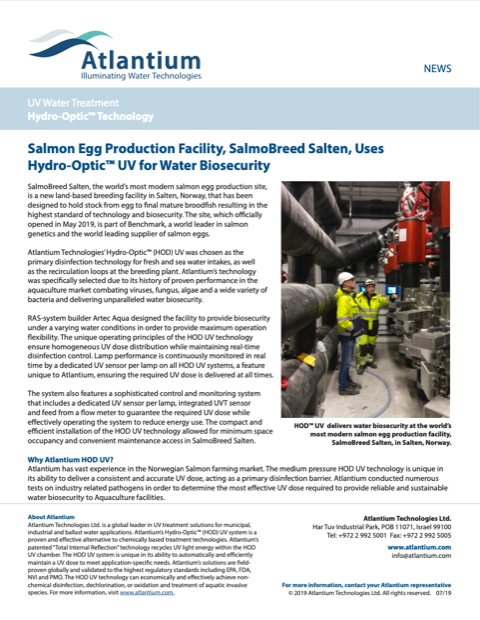
SalmoBreed Salten, the world’s most modern salmon egg production site, is a new land-based breeding facility in Salten, Norway, that has been designed to hold stock from egg to final mature broodfish resulting in the highest standard of technology and biosecurity. The site, which officially opened in May 2019, is part of Benchmark, a world leader in salmon genetics and the world leading supplier of salmon eggs...Read More
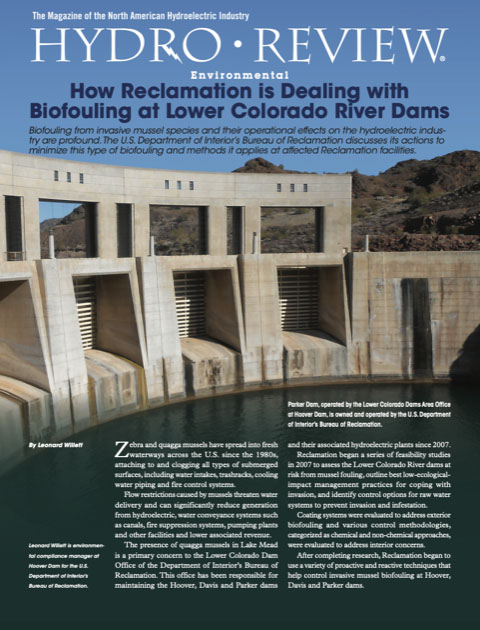
Biofouling from invasive mussel species and their operational effects on the hydroelectric industry are profound. The U.S. Department of Interior’s Bureau of Reclamation discusses its actions to minimize this type of biofouling and methods it applies at affected Reclamation facilities...Read More
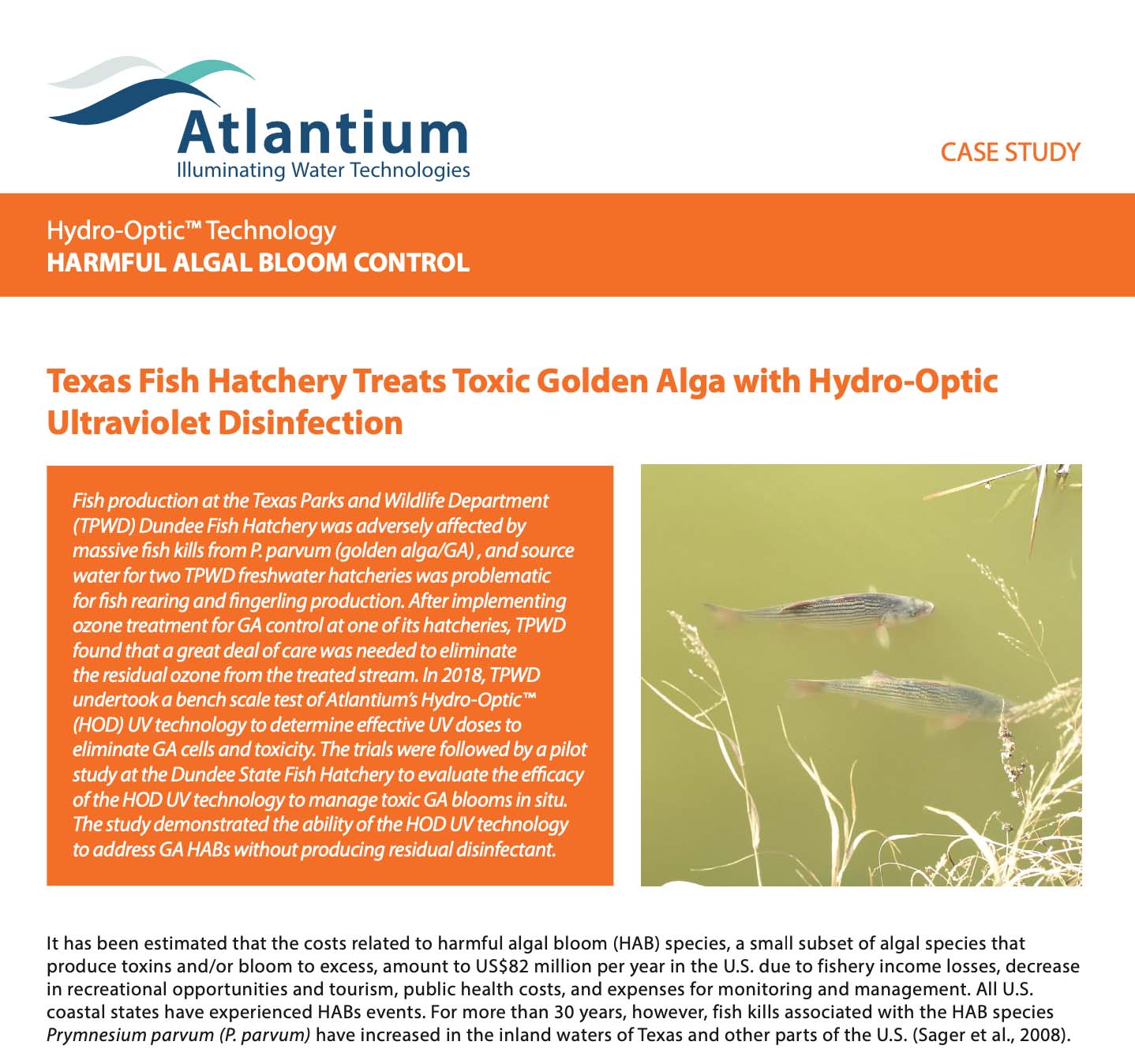
Fish production at the Texas Parks and Wildlife Department (TPWD) Dundee Fish Hatchery was adversely affected by massive fish kills from P. parvum (golden alga/GA) , and source water for two TPWD freshwater hatcheries was problematic for fish rearing and fingerling production. After implementing ozone treatment for GA control at one of its hatcheries, TPWD found that a great deal of care was needed to eliminate the residual ozone from the treated stream. In 2018, TPWD undertook a bench scale test of Atlantium’s Hydro-OpticTM (HOD) UV technology to determine effective UV doses to eliminate GA cells and toxicity. The trials were followed by a pilot study at the Dundee State Fish Hatchery to evaluate the efficacy of the HOD UV technology to manage toxic GA blooms in situ. The study demonstrated the ability of the HOD UV technology to address GA HABs without producing residual disinfectant...Read More
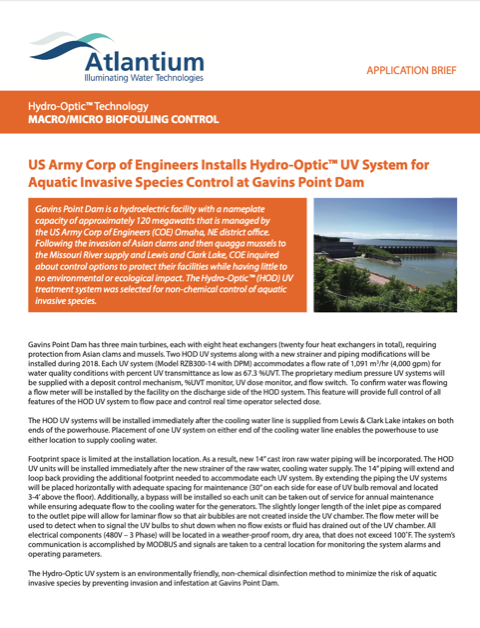
Gavins Point Dam is a hydroelectric facility with a nameplate capacity of approximately 120 megawatts that is managed bythe US Army Corp of Engineers (COE) Omaha, NE district office. Following the invasion of Asian clams and then quagga mussels to the Missouri River supply and Lewis and Clark Lake, COE inquired about control options to protect their facilities while having little to no environmental or ecological impact. The Hydro-OpticTM (HOD) UV treatment system was selected for non-chemical control of aquatic invasive species. ...Read More
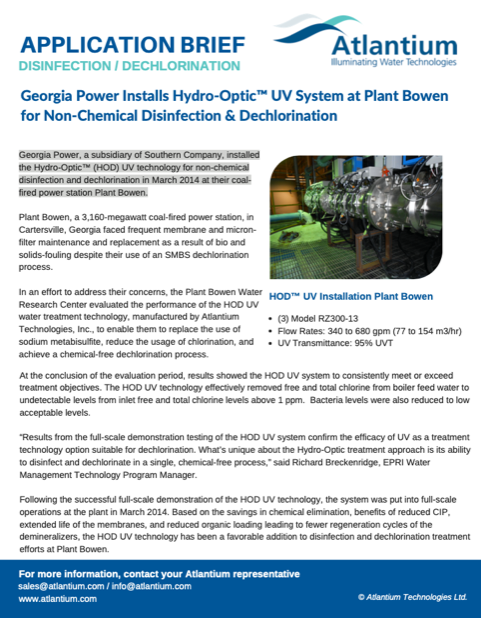
Georgia Power, a subsidiary of Southern Company, installed the Hydro-OpticTM (HOD) UV technology for non-chemical disinfection and dechlorination in March 2014 at their coal- fired power station Plant Bowen...Read More
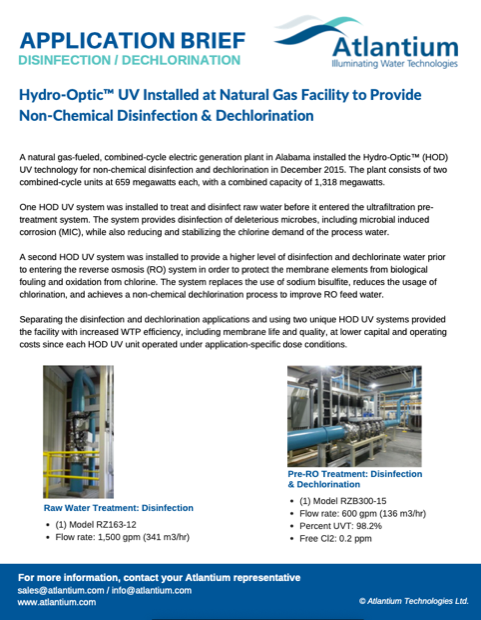
A natural gas-fueled, combined-cycle electric generation plant in Alabama installed the Hydro-OpticTM (HOD) UV technology for non-chemical disinfection and dechlorination in December 2015. The plant consists of two combined-cycle units at 659 megawatts each, with a combined capacity of 1,318 megawatts...Read More